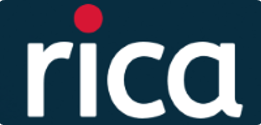The use of videos as an evaluative resource for learning: an experience in higher education
DOI:
https://doi.org/10.18226/25253824.v6.n10.05Keywords:
Use of videos, Learning assessment, Education technologies, Online teachingAbstract
The use of media resources leads to the construction of learning in line with the creativity, sensitivity and emotions that are aroused in students. Therefore, in the context of a pandemic, this article aims to present an experience on the use of videos as an assessment resource in the teaching and learning process in higher education, focusing on the creation and use of educational videos as a mediation tool. in the classroom. Theoretical and methodological in nature, the investigation was developed within the scope of a discipline of the Postgraduate Course in Education of a Brazilian public university in a virtual education classroom space. It was in carrying out the activities of the discipline and in the seminars on the subjects of learning assessment, that the study problem arose: of a didactic character, how can the evaluation be carried out through videos prepared by graduate students? With a qualitative approach, such as data collection, the research consists of the experience report of the subjects involved, with observations and narratives of the videos evidenced in the discussion forums in the Virtual Learning Environment (AVA). The categories of analysis considered were the productions of the videos and the interactions in the AVA forums, observing in the videos their structure, content, consistency of images and evidence of a formative evaluation. The results show that the use of videos, as an educational didactic tool, anchors the process of meaning, offers possibilities for students' learning, develops evaluative procedures in the practice of teaching and learning, as well as the practice of a formative learning assessment, moments of reflections from the teacher to the student.
References
CANDEIAS, C. N. B. & CARVALHO, L. H. P. O uso de videoaulas como ferramenta no processo de ensino e aprendizagem em química (2016). Anais do 7º Simpósio Internacional de Educação e Comunicação- SIMEDUC. ISSN: 2179-4901. Sergipe.
FRANÇA, L. R. S, COSTA, C. J. de S. A & FREITAS, M. A. S. F. (2019). Avaliação da aprendizagem em contextos híbridos educacionais: compartilhando experiências sobre a utilização do mapa conceitual como recurso avaliativo no ensino superior. Revista Devir Educação. ISSN: 2526-849X. V.3, n.2, p. 136-155.
HOFFMANN, J. (2001). Avaliar para promover: as setas do caminho. 9. ed. Porto Alegre: Mediação.
FREITAS, M. A. S. (2009). Os estudos hermenêuticos e a sua contribuição na avaliação da aprendizagem que ocorre em ambientes de formação online. In MERCAADO, L. P. L. (Org.). Fundamentos e práticas na educação a distância. Maceió: EDUFAL, p. 79-92.
LUCKESI, C. C. (2011). Avaliação da aprendizagem: componente do ato pedagógico. São Paulo: Cortez.
CANDEIAS, C. N. B. & CARVALHO, L. H. P. (2016). O uso de videoaulas como ferramenta no processo de ensino e aprendizagem em química. Anais do 7º Simpósio Internacional de Educação e Comunicação- SIMEDUC. ISSN: 2179-4901. Sergipe.
CUSATI, et. al. (2020). Vídeos educativos em prol da preservação de documentos escolares no contexto de uma cultura digital. Revista Interfaces Científicas. V.9, n.2.
MORAN, J. M. (1995). O vídeo na sala de aula. In Revista Comunicação & Educação. São Paulo, ECA- Ed. Moderna, v. 02, p. 27 a 35.
PAZZINI, D. N. A & ARAÚJO, F. V. (2013). O uso do vídeo como ferramenta de apoio ao ensino-aprendizagem. Artigo (Especialização)- Universidade Federal de Santa Maria, Centro de Tecnologia. Curso de Especialização em Mídias na Educação, EAD. RS.
HORN, M. B. & STAKER, H. (2015). Blended: usando a inovação disruptiva para aprimorar a educação. Porto Alegre: Penso.
SILVA, M. (2002) Sala de aula interativa. 3. ed. Rio de Janeiro: Quartet.
FERREIRA, P. P. S. (2018). Avaliar para promover- as setas do caminho: uma análise do método avaliativo no ensino da Geografia na rede pública. Monografia (Licenciatura em Geografia)- Universidade Federal de Alagoas. Curso de Geografia. Delmiro Gouveia.
SILVA, M. (2006). O fundamento comunicacional da avaliação da aprendizagem na sala de aula online. In. SILVA, M.; SANTOS, E. (Orgs.). Avaliação da aprendizagem em educação online: fundamentos, interfaces e dispositivos, relatos de experiência. São Paulo: Edições Loyola, p. 22-36.
BARREIRO, P. I. A & SILVA, M. (2008). Avaliação da aprendizagem na educação online: relato de pesquisa. Revista Educação, Formação & Tecnologias, vol 1 (2), nov.
KRATOCHWILL, S. & SILVA, M. (2008). Avaliação da aprendizagem on-line: contribuições específicas da interface fórum. Revista Diálogo Educacional. V. 08. N. 24. P. 445-458.
PAZZINI, D. N. A. & ARAÚJO, F. V. (2013). O uso do vídeo como ferramenta de apoio ao ensino-aprendizagem. Artigo (Especialização)- Universidade Federal de Santa Maria, Centro de Tecnologia. Curso de Especialização em Mídias na Educação, EAD. RS.
MOREIRA, A. da S. (2003). Cultura midiática e educação infantil. Revista Educ. Soc. Campinas. Vol. 24, n. 85, p. 1203- 1235, dezembro.
VICENTINI, G. W. & DOMINGUE, M. J. C. S. (2008). O uso do vídeo com instrumento didático em sala de aula. In: ENANGRAD. Curitiba.
LÜDKE, M. & ANDRÉ, M. (1986). Pesquisa em educação: abordagens qualitativas. São Paulo: Editora EPU.
Downloads
Published
How to Cite
Issue
Section
License
Copyright (c) 2022 Jamilly Souza Tenorio, Cleide Jane de Sá Araújo Costa, Givaldo Oliveira dos Santos

This work is licensed under a Creative Commons Attribution 4.0 International License.
Authors keep the copyright and cede to the journal the right of publishing first. Published works are licensed under a Creative Commons Attribution 4.0 International (CC BY 4.0) license, allowing the sharing of the work with recognition of the authorship and initial publication in this journal.






